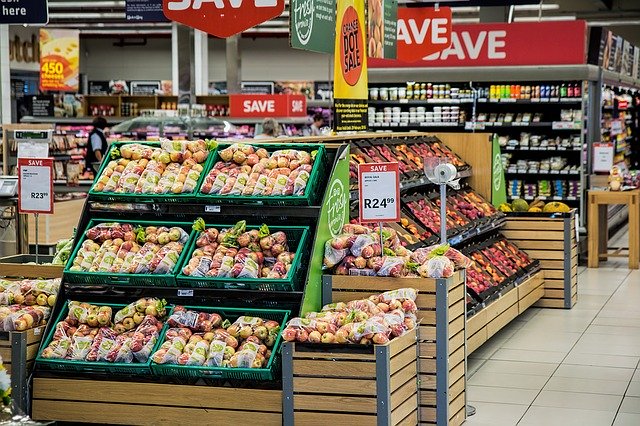Income inequality and food insecurity have been a long-standing issue not only for the campaign trail, but for many Americans. In 2018, 11.1% of households were determined as “food insecure,” according to United States Department of Agriculture numbers.
A government assistance program — the Supplemental Nutrition Assistance Program, or SNAP — was designed to help low-income individuals be able to purchase food at supermarkets, retailers such as WalMart, and other venues such as gas stations. Also formerly and colloquially known as the food stamp program, SNAP has restrictions on what cannot be purchased, such as alcohol, cigarettes, tobacco, hot foods, and nonfood items, like pet food and hygiene products.
Here are a few ways to approach the effects of SNAP in your area.
Who receives SNAP?
Danilo Trisi, a senior research analyst in the Poverty and Income Trends team at the Center on Budget and Public Policy, says that SNAP typically helps both working families and households with “very low” incomes.
“We’ve found that nationwide SNAP lifted 1.9 million children out of deep poverty (defined as below 50 percent of the poverty line) in 2016, more than any other government assistance program,” Trisi said.
Nationally, 39,705,000 individuals nationally participated in SNAP, a decrease from last year’s number of 42,228,000 participants in 2018, according to U.S. Department of Agriculture data. Beginning in 2010, the amount of recipients rose, then peaked in 2013 with 47,636,000 people. Since 2013, the number has increasingly dropped.
More than 72 percent were families with children, while more than 50 percent were in working families in 2017, according to Center on Budget and Policy Priorities data. 22 percent were families who had disabled or elderly members.
Food stamps are often a “bridge between jobs or as a supplement to wages,” said Angie Rogers, president and CEO of Arizona Food Banks. She added that food was often the last variable in calculating expenses for many.
Who might these people be in your area? Are they typically households with children or with someone with a serious illness or disability, as seen in Food and Nutrition Service national statistics? Is there a group one typically might not think of, such as college students? Consider approaching the story from a narrative perspective so the story is not just statistics.
State requirements
The SNAP program has recently been in the news for a proposed and controversial federal rule. The USDA’s goal is to eliminate “broad-based categorical eligibility” by tightening standards. In order to receive SNAP benefits, a household’s income should be at or below 130 percent of the federal poverty level, while assets must be $2,250 or less if there is not an eldery or disabled family member, according to the Center on Budget and Policy Priorities.
Currently, states can lift eligibility requirements, taking savings and assets — such as a house or car — into account while calculating SNAP benefits. The USDA’s proposed rule will remove the ability for states to do so; only those with assets or income above the limits will be eligible for food stamps if the household has been receiving Temporary Assistance for Needy Families (TANF) assistance for more than six months.
You can compare national numbers with state numbers. How does your state compare to others?
Free and reduced-price school meals
A newly-released internal analysis by the USDA stated that revised SNAP proposals would eliminate automatic eligibility for a million children nationwide, while about 55,000 would no longer be eligible for free meals — only reduced-price.
Currently, children who are eligible for the Supplemental Nutrition Assistance Program (SNAP) are automatically enrolled for free school meals.
If the SNAP federal rule passes, schools and families will have to individually complete enrollment applications, where the process is “burdensome,” said Zoë Neuberger, the Center on Budget and Policy Priorities’s (CBPP) senior policy analyst. Families applying for reduced-price meals will also have a co-pay of 30 cents for breakfast and 40 cents for lunch.
Long-term, this can affect states’ Community Eligibility Provisions (CEP), which allows eligible schools to serve free meals to all its students if the rate of needy students is 40% or higher.
However, Brandon Lipps, Acting Deputy of the Food and Nutrition Service, said during a House committee hearing the effects will not be dire: “An estimated 96% of children will remain eligible for free or reduced-price meals.”
Study how your local free or reduced-price meal program works, as well as if residents and schools think it is enough. How is the food quality? Affordability? Ease of application process?
Other local food-providing organizations
Robert Greenstein from the U.S. Census Bureau says that government assistance programs like SNAP and Social Security were one of the reasons for this year’s overall declining poverty rate — along with a strong labor market and economy that is boosting family income and minimum wage hikes in 8 states.
If the Trump administration’s proposed policies, such as doing away with these governmental assistance programs, take place, “all of these gains can be reversed,” said Greenstein during a call with reporters.
Contact local food banks, nonprofits, and charities in your area, as well as look into federal programs such as Meals on Wheels, for perspectives on hunger in your area. Does SNAP help supplement? Why might people visit a food bank if they’re receiving SNAP assistance? Has the organization seen a rise or fall in certain groups coming to them?











